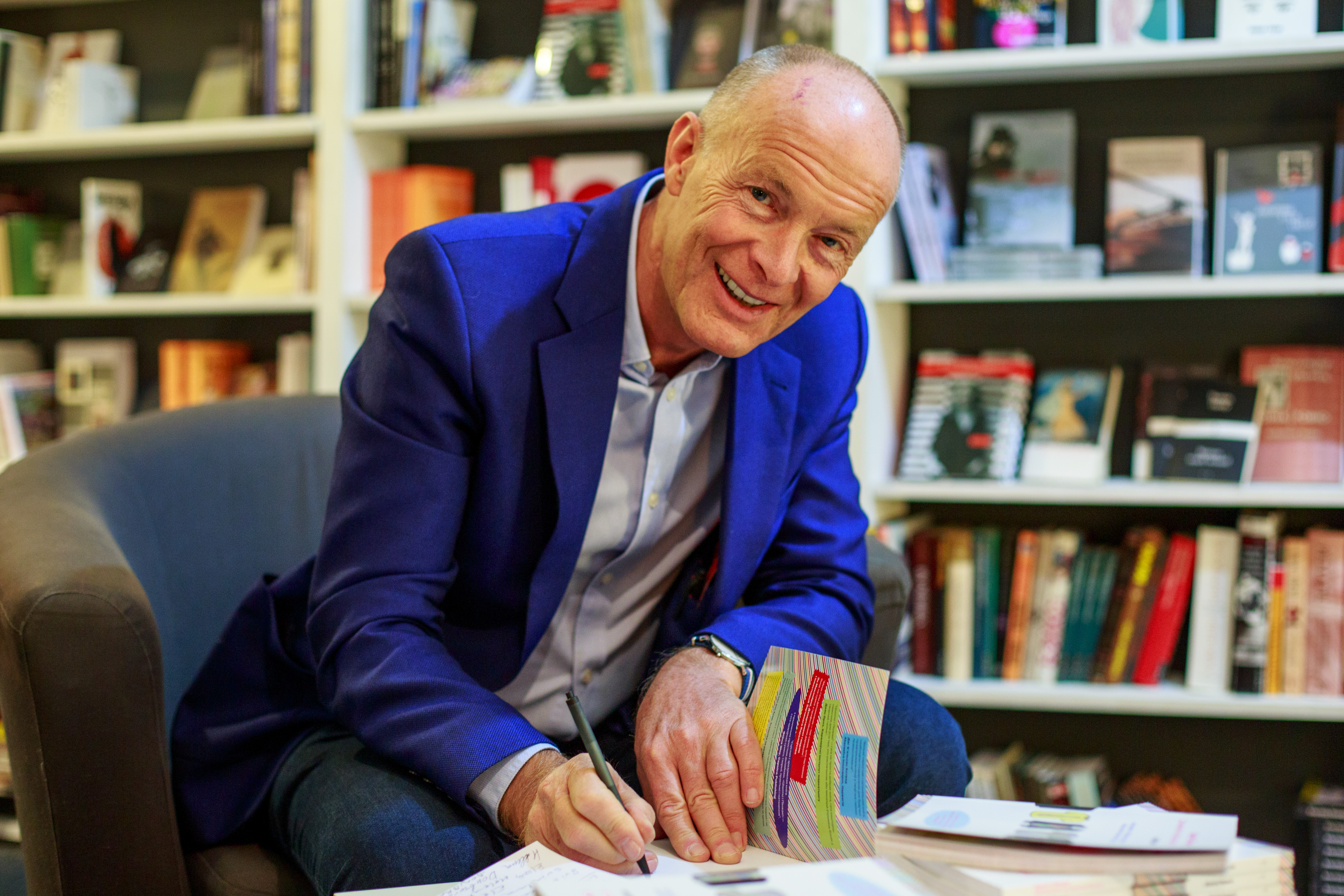David Parrish’s lucid analysis describes the fluid and constant evolution of design professions, within which creatives are no longer tied to rigid schemes, teams and permanent employers. Creative micro-enterprises adapt to circumstances and work globally.
The 29 of June is World Industrial Design Day. Design is one of the most powerful engines in the creative industries. What is the role of the designer today and what is his distance from the creative business?
Design is one of the most important parts of the creative industries world-wide. Designers in all disciplines play an important part in today’s world: in business of course, but also in the public sector and society at large. Consumers engage with industrial design every day, using the products and services that are part of their lives. Yet design is not fully understood or appreciated by most consumers, who regard design simply as style rather than functionality. So unfortunately, designers don’t get sufficient credit for making the world a better place.
Chase One Rabbit give 63 tips, techniques and tales for creative entrepreneurs. In your opinion designer exploit better their talent as employers or as entrepreneurs?
I have the privilege and pleasure of working with designers internationally in my work as a business adviser and trainer. Furthermore, I wrote my business books with designers and other creatives in mind. My marketing book ‘Chase One Rabbit’ provides useful techniques and tips, plus examples of designers and other creatives using smart marketing. I see designers working in different circumstances: as entrepreneurs, employers, employees self-employed sole traders, or as freelancers engaged temporarily in project teams. Each of these options has advantages and disadvantages. Some designers are more suited to one situation rather than another. One of my jobs is to help them find the situation in which they are most effective and happiest.
David Parrish inspires and empowers creative people worldwide. How do you see the future of creative jobs?
It’s clear that the nature of employment is changing, world-wide. There are fewer “jobs for life” and it’s now uncommon for a person to work for one employer throughout their career. We see an emerging “gig economy”, more “zero hour contracts” and many people having two or more jobs. Younger people are perhaps more comfortable with this “portfolio” approach. Many younger people I know have a part-time job, their own start-up enterprise and a “passion project” or hobby in which they can express their creativity. With some notable exceptions, the creative industries is largely made up of micro-enterprises of 1-10 people. Also, creative people often work in temporary teams for particular projects. So creative people have to adjust to these circumstances. And they are doing just that. As I travel the world I meet “digital nomads” and creative micro-businesses in all parts of the world, trading globally.
If you were to list three key elements that you consider to be incomplete, blurred or completely absent in the current education of designers, which would you think of?
It’s interesting for me that when I travel to different countries, people tell me that design education in their country is incomplete. My reaction is to smile and tell them not to worry, they are not special, because I hear the same thing in every country! Usually, the missing elements in design education are: understanding business matters; working in teams; and interpersonal communication (with clients and colleagues). In other words, three vital elements in how design and designer work in the context of business and entrepreneurship
Creative Industries Federation and lots of famous UK designer and architects fear catastrophic consequences for the sector due to Brexit. What’s David Parrish opinion? Do you share the same worries?
Since the Brexit referendum, the uncertainty about the future has been the most damaging consequence, for businesses and individuals. So I’m worried already, whatever happens with Brexit. As for the future, a No-Deal Brexit concerns me the most, but there will be challenges and problems even if some deal is agreed. At the ground level, each design business is different. Some are internationally focused whereas others work more locally; some employ EU nationals, others don’t. Some design businesses have already made changes in preparation for Brexit; others have their plans ready. Brexit will be a big change for all of us. So we need to be creative and designers are creative. As I said in my TED talk at TEDx Napoli, there are two different kinds of creativity. We use creativity in the studio every day and now, more than ever, we need to use creativity in the business office, to devise effective strategies to deal with the consequences of Brexit.

Missing elements in design education in accordance with David Parrish: 1) understanding business matters; 2) working in teams; 3) interpersonal communication
Cover picture: © Yuliya Matskevich
Who is David Parrish
 David Parrish helps creative entrepreneurs make their businesses and organisations even more successful. He works internationally as a speaker, trainer and management consultant specialising in the creative, digital and cultural sectors. David speaks about creativity and business at conferences and creative industries events world-wide. He works worldwide with businesses in the creative and digital sector and the organisations that support them. David is author of the highly-acclaimed book and eBook ‘T-Shirts and Suits: A Guide to the Business of Creativity’. His approach to business development combines creative people [“T-Shirts”] with smart business thinking [“Suits”]. The book has also been published in China, Colombia, Taiwan, Spain, Lithuania, Thailand, Chile, Ukraine, Belarus, Azerbaijan, Georgia, Armenia and Moldova. His latest book on strategic marketing is ‘Chase One Rabbit: Strategic Marketing for Business Success. 63 Tips, Techniques and Tales for Creative Entrepreneurs’.
David Parrish helps creative entrepreneurs make their businesses and organisations even more successful. He works internationally as a speaker, trainer and management consultant specialising in the creative, digital and cultural sectors. David speaks about creativity and business at conferences and creative industries events world-wide. He works worldwide with businesses in the creative and digital sector and the organisations that support them. David is author of the highly-acclaimed book and eBook ‘T-Shirts and Suits: A Guide to the Business of Creativity’. His approach to business development combines creative people [“T-Shirts”] with smart business thinking [“Suits”]. The book has also been published in China, Colombia, Taiwan, Spain, Lithuania, Thailand, Chile, Ukraine, Belarus, Azerbaijan, Georgia, Armenia and Moldova. His latest book on strategic marketing is ‘Chase One Rabbit: Strategic Marketing for Business Success. 63 Tips, Techniques and Tales for Creative Entrepreneurs’.



























[…] LEGGI L’INTERVISTA IN LINGUA ORIGINALE […]